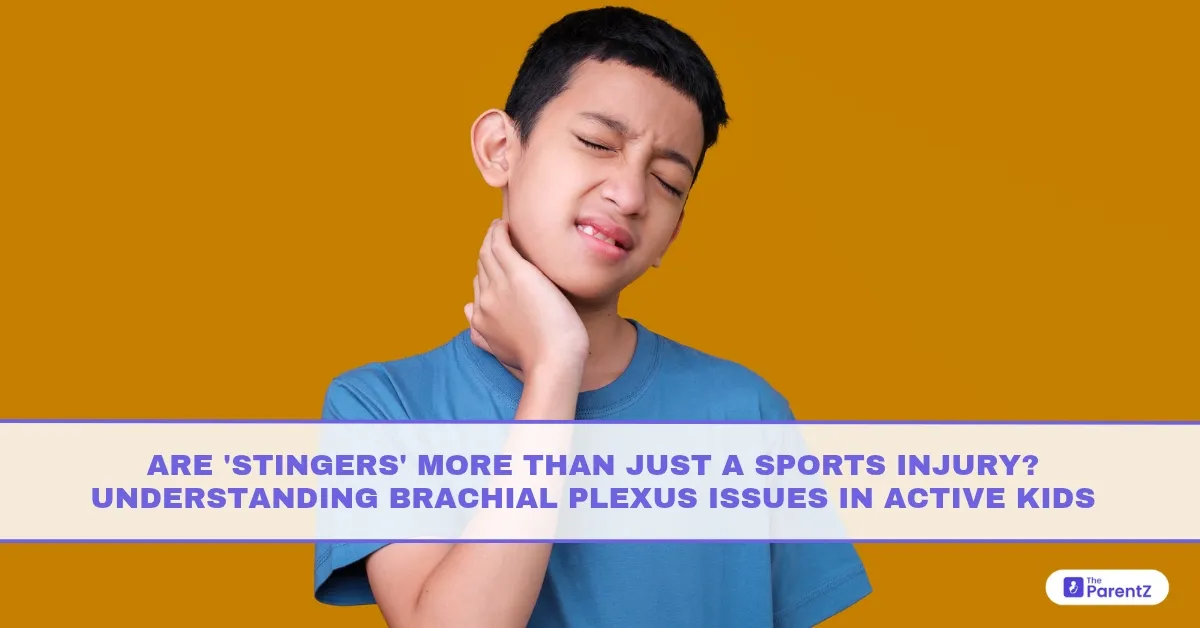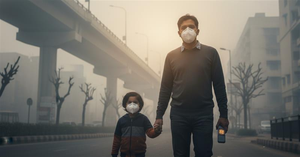Sports play a significant role in a child’s physical and emotional development. From football to gymnastics, participating in physical activity helps kids build strength, discipline, and social skills. However, it also comes with the risk of injuries. One such injury, often overlooked but important, is the "stinger" or "burner."
Though commonly seen in young athletes, stingers may indicate more serious issues involving the brachial plexus, a major nerve network that controls movement and sensation in the shoulder, arm, and hand.
What is a Stinger?
A stinger is a sudden, sharp, burning pain that runs from the neck or shoulder down the arm. It usually happens after a direct blow or a sudden stretch of the neck and shoulder area. The pain is often described as electric or shock-like and is usually short-lived, lasting seconds to a few minutes.
Stingers are caused by an injury to the brachial plexus, the group of nerves that exit the spinal cord in the neck and travel down the arm. When these nerves are compressed or stretched, it disrupts the signal to the arm, causing pain, numbness, or weakness.
What is the Brachial Plexus?
The brachial plexus is a network of nerves that originates from the cervical spine (C5–T1). These nerves control both muscle movement and sensation in the shoulder, arm, and hand. Injuries to this area can result in varying degrees of motor and sensory problems.
Are Stingers Serious?
Most stingers are temporary and resolve without treatment. However, they should not be ignored, especially in children. Repeated stingers or longer-lasting symptoms may suggest more serious nerve injuries or structural problems in the cervical spine.
Signs that a stinger might be more than just a minor injury include:
- Persistent pain, numbness, or tingling
- Weakness in the affected arm
- Recurrent episodes
- Involvement of both arms
If your child experiences these signs, medical evaluation is necessary.
Common Causes in Active Kids
While stingers are common in contact sports, they can occur in any situation involving sudden impact or overextension of the neck and shoulder. Some common causes include:
- Tackling or being tackled in football or rugby
- Falls in gymnastics or wrestling
- Neck being pushed or twisted during physical activity
- Improper technique in sports involving overhead motions, such as baseball or tennis
Children with weaker neck muscles or poor posture may be more prone to this type of injury.
Recognising the Symptoms
Children may have difficulty describing nerve-related pain. As a parent or coach, it's important to look out for these signs:
- Sudden crying or shaking the arm after a fall
- Holding one arm limply or avoiding its use
- Complaints of tingling, burning, or warmth in the arm or hand
- Sudden clumsiness or weakness in hand movements
- “Dead arm” sensation after a hit or tackle
If a child consistently complains of arm discomfort after sports activities, it may be a signal that something more than a minor injury is going on.
Diagnosis and Evaluation
For first-time and mild cases, a pediatrician or sports medicine doctor may rely on a physical exam and history. If symptoms are recurring or severe, additional tests might be needed, such as:
- X-rays or MRI to check for bone or disc issues
- Nerve conduction studies to measure nerve signal speed
- Electromyography (EMG) to evaluate muscle response
These tests help confirm whether the injury is limited to the brachial plexus or if there are underlying problems such as herniated discs or spinal cord involvement.
Treatment and Recovery
Most stingers heal on their own with rest and basic care. Treatment usually includes:
- Resting the arm and avoiding sports until full recovery
- Applying ice or heat for comfort
- Gentle stretching and strengthening exercises
- Over-the-counter pain relief if needed
For recurring stingers or more serious injuries, physical therapy may be recommended. Therapy focuses on strengthening the neck, shoulders, and upper back to prevent further injuries.
In rare cases, surgery may be considered if there is ongoing nerve compression or structural damage.
Preventing Stingers in Kids
Prevention starts with awareness and preparation. Parents, coaches, and children can take the following steps:
- Ensure proper sports technique: This is especially important in contact sports where tackling or falling techniques matter.
- Strengthen neck and shoulder muscles: Strong muscles help stabilize the head and neck during impact.
- Improve posture: Correct posture reduces unnecessary strain on the neck and upper back.
- Use protective gear: Appropriate helmets, shoulder pads, or collars can absorb some of the shock.
- Warm-up and stretch: Encourage kids to warm up before play and stretch afterward to maintain flexibility.
When to Seek Medical Help
Seek prompt medical evaluation if your child:
- Experiences weakness or numbness that doesn’t go away
- Has repeated episodes of stingers
- Shows signs of muscle wasting
- Has pain or symptoms in both arms
- Complains of neck pain along with arm issues
Early evaluation ensures that more serious conditions, such as spinal cord injuries or brachial plexus disorders, are not overlooked.
Conclusion
Stingers may appear to be harmless sports injuries, but in children, they warrant closer attention. While most are mild and temporary, repeated or severe stingers can signal underlying problems with the brachial plexus or spine.
Understanding the signs, causes, and preventive measures can help parents and coaches respond quickly and appropriately. With the right care, most children recover fully and can return to sports safely.








Be the first one to comment on this story.